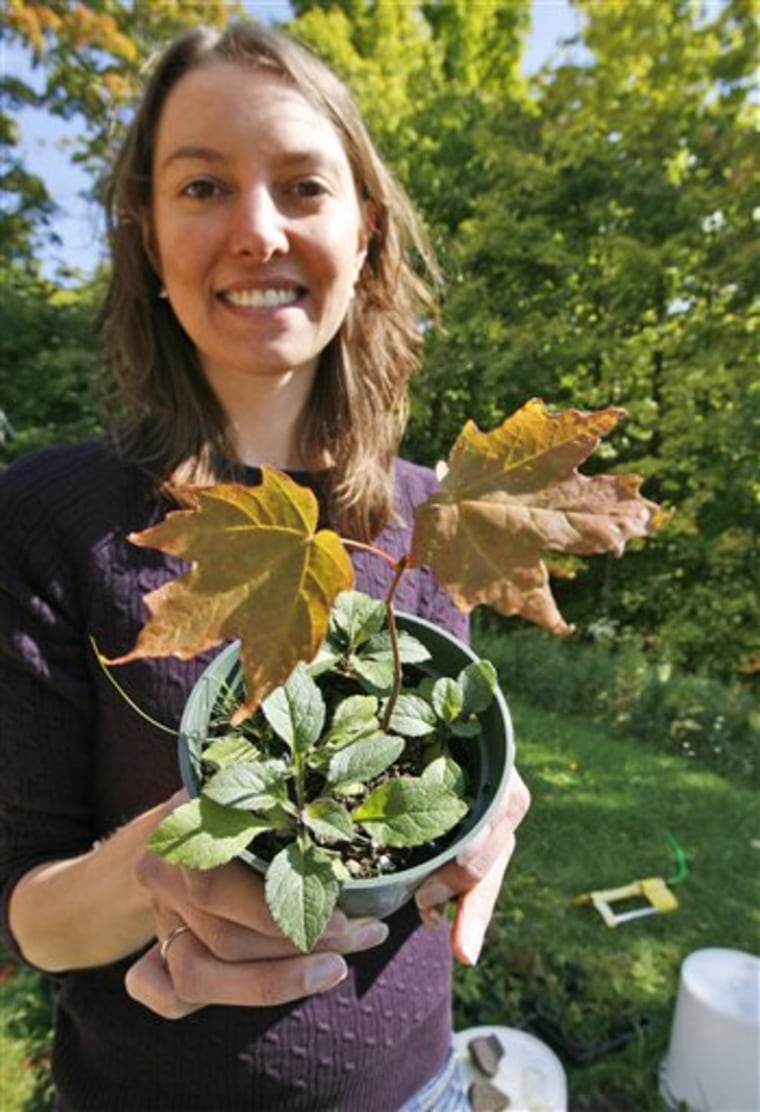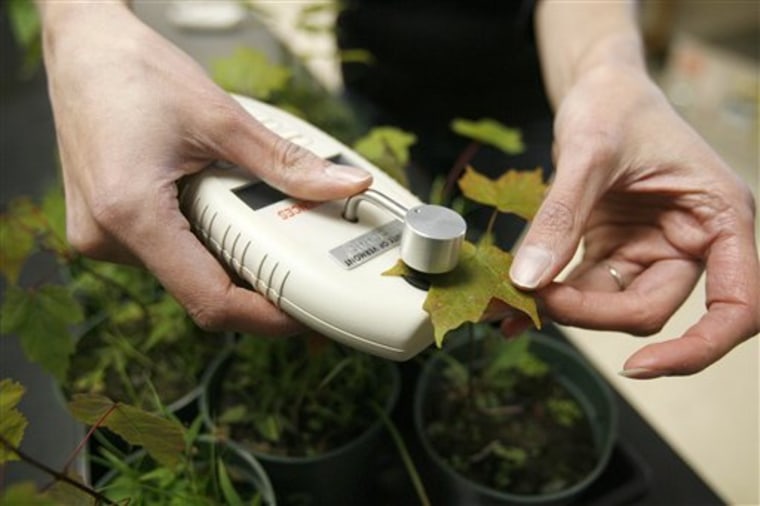Could climate change dull the blazing palette of New England's fall foliage?
The answer could have serious implications for one of the region's signature attractions, which draws thousands of "leaf peepers" every autumn.
Biologists at the University of Vermont's Proctor Maple Research Center will do some leaf peeping of their own to find out — studying how temperature affects the development of autumn colors and whether the warming climate could mute them, prolong the foliage viewing season or delay it.
Using a three-year, $45,000 U.S. Department of Agriculture grant, they're planning to measure the color pigments in leaves exposed to varying temperatures in hopes of finding a pattern. The study starts next month, although some experiments are already under way.
"It is getting warmer, and people want to know how that's going to affect this big process that's so important to us," said research associate Abby van den Berg.
The three-week period of peak foliage color — usually from the end of September to mid-October — is among the busiest of the year for Vermont tourism, bringing in an estimated $364 million, according to state officials. It's also an important time for tourism in the other New England states.
"It's a critical season for us," said Allison Truckle, owner of Tucker Hill Inn, in Waitsfield, which does about 40 percent of its business in autumn.
Focus on temperature
Many variables go into triggering leaf color, but for now the research will focus on temperature. The experiment is starting with the researchers' assumption that the brilliant colors are promoted by cold nights followed by warm, sunny days.
"Do cold nighttime temperatures affect and promote fall coloration? And specifically, we're really looking at anthocyanin synthesis, the red pigments that are created at that time," van den Berg said.
The study also will look at whether cold daytime weather plays a role.

In the fall, chlorophyll — the green pigment in leaves — breaks down in response to decreasing day length, revealing the yellow to orange anthocyanin pigment.
In preliminary experiments so far this year, van den Berg has been subjecting groups of sugar and red maple saplings to a range of temperatures. Some of the test subjects are kept in a constantly refrigerated box with a window to let in sunlight, some potted saplings spend their days outdoors and then are moved into a cooler at night, and some just remain outdoors with no artificially altered temperature.
Every few days, she tests the leaves with handheld meters to measure their chlorophyll and anthocyanin content.
So far, it's too early to tell what effect temperature is having, but the researchers expect to have results before the three years is up.
The study is unique in investigating how climate change might affect the timing and color of fall foliage, said Jake Weltzin, head of the USA National Phenology Network, which has started its own volunteer effort to track how climate change affects certain plants.
Stress earlier found to have impact
In previous years, the University of Vermont research center found a link between the amount of stress on sugar maples during the growing season — marked by a lower level of nitrogen in leaves — and the onset and amount of red in the leaves.
"So trees that were experiencing a little more stress tended to start turning color a little earlier and making more red," van den Berg said.
Van den Berg says she's noticed that in warmer autumns, brilliance is muted in some places. But she tries not to put too much stock in what she sees from place to place.
"It's always great. ... It can be peak in different places at the same time so you just drive around and you hit all these different pockets of the landscape, so it's always fabulous," she said.
